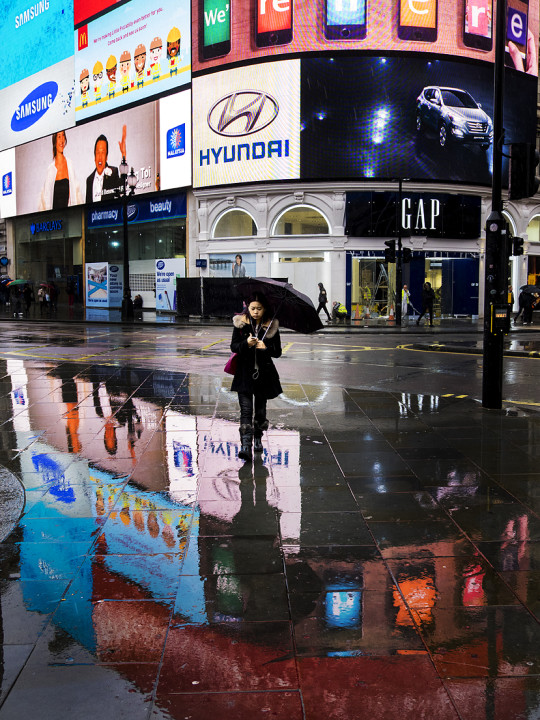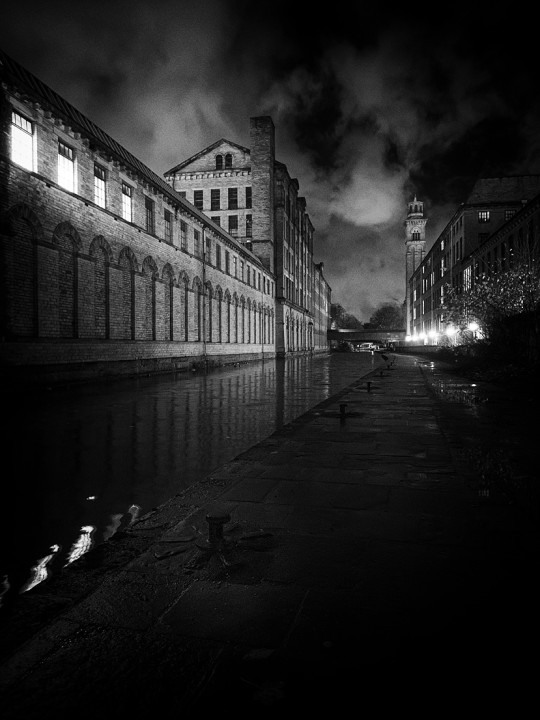Pentax P30, Canon T90, Mamiya RZ67, Fuji GX617, Holga, Zero Image 2000, Canon 5D, Panasonic GF1, Canon 5D MKII, Olympus E-M5, Olympus E-P5, Olympus E-M1 … that’s my camera history in brief! The most significant thing since the Mamiya and the Fuji is how my cameras have shrunk in size. I still can’t believe the weight I used to carry around with a full kit of camera body, lenses and filters. No wonder I have a weak back these days!
I still have the Canon gear, but it’s getting used less and less these days. I can see it being sold in the not too distant future, as it seems to spend more time at home sat in a Lowepro bag than out on-location taking pictures.
The reason for this is a quite common one these days: mirrorless cameras. My first introduction to this new revolution was the Micro Four Thirds format with the Panasonic GF1. I started with just the camera body and 20mm Panny lens that accompanied me on my shoots and gave me a second, lighter camera to work with. I instantly fell in love with the camera, its compact form and even back then, its high quality images. So, when Olympus introduced the OMD E-M5 with its new sensor, I grabbed one at the first chance I got. WOW! What a camera. Great build quality, great features and great quality pictures. Why didn’t they invent this ten years ago!

I’m a travel and landscape photographer. I specialize in panoramics (hence the Fuji GX617, though it was sold years ago) and more recently urban landscapes. For me, the Olympus E-M5 was the urban camera that I had always needed. Small, light and discreet – it fit the bill perfectly and most of all, I could carry it around a busy city all day, capturing stunning images and not feeling tired and aching all over from carrying a heavy camera bag.
A smaller camera meant a smaller tripod too, though the 5-axis image stabilisation also helped me capture images I couldn’t previously. The articulating screen meant I could take low-level street views without having to sprawl myself on the city street. It also meant I could practice my street photography without drawing attention to myself and often avoid even looking at my subject, as I was looking down at the screen to compose.

The retro looking E-P5 became my secondary back-up camera, whilst the E-M1 enhanced everything that the E-M5 first gave me. It was the perfect upgrade. The E-P5 gets used mostly for long exposure work with ND filters, which I Iove doing. It is a better camera than the E-M1 for this type of work due to the latter’s Phase Detection feature that causes it to perform less well with this technique. I think I can forgive it this though for the way it excels in every other department. The Live Bulb/Time feature is one of the best features I have seen on any camera and worth the cost of the camera alone!
Both cameras are ideal for all my photography work. Whether shooting images for a magazine article I am writing, capturing images for my photo agency or taking stock images for calendar use, I love the results and so do my customers.

I have a full set of prime lenses for the cameras, as well as a couple of zooms, which I use depending on the shoot and location. I love the way you can customize the OM-D cameras, and set up the controls and buttons that suit your style of shooting. I have one button on the E-M1 for example that I’ve set to change the format, as I love shooting square images and want quick access to this option. And of course, I love how the electronic viewfinder allows me to frame and compose in this square format in-camera. It’s something I can’t do with my Canon. I also love the custom self-timer on the E-M1, which is great when shooting panoramics. Because I use an L-bracket on the camera, I can’t plug-in a cable release when the camera is in vertical format for panoramics on the tripod. So instead, I set the custom self-timer to 10 shots with 2-second intervals, so I can pan the camera around for the multiple shots and guarantee shake-free images with ease.

The E-P5 has the cable release socket on the right hand side of the camera, so this isn’t an issue with this model, but I also love that this camera has the detachable and beautifully clear separate viewfinder, the VF-4. Because of this, I can get the camera into my small waist bag as a second camera, where a second E-M1 just wouldn’t fit. Coming from a medium format camera like the Mamiya RZ67 with its waist-level viewfinder, being able to flip up the VF-4 finder to work in a similar way feels like second nature to me. I love shooting landscapes this way, composing in the square format that so many of my landscape images suit.
As well as its superior performance for long exposures, the E-P5 is great for shooting infrared using an R75 filter over the lens, as I can use Live Boost to enable me to compose images without having to unscrew the filter each time.

The Olympus OM-D cameras are as much at home in the rural landscape as they are in the urban one. I’ve always loved restrictions and the methodical approach that prime lenses put upon you compared to zooms. Therefore these are often my first choice when shooting landscapes. I much prefer bolting on a 12mm or 17mm lens and composing with my feet to standing still and zooming in and out with the zoom lens. I feel my pictures benefit from this too.
I’m not a fair weather photographer. I hate clear blue skies and I much prefer the drama of a stormy sky. You’ll even see me pack up before sunset, because I’m not keen on these either. It’s too easy to get a pretty picture this way and Mother Nature is doing half the work for you anyway. Given that half my images are going to be converted to black and white, this extra colour is unnecessary. I prefer the challenge of finding great images and compositions in more difficult conditions. This is when the true photographer in you can excel through hard work, and I think the results are more rewarding.

Like most landscape photographers, I have seen the market change and this regrettably means our images are bought and sold for fees much lower than they were ten years ago. So, the photography workshop became the answer for many pros to top up their incomes from the shortfall in sales. I have tried to do things a bit differently, mind you.
I started by offering a few workshops, but since every other photographer seemed to be doing the same, I went for something different and set up an online course in landscape photography. It was and still is the only online course with this specialty and offers both beginners and advanced users the chance to learn photography and increase their skills online over a whole year, instead of during a brief group weekend workshop.
When even more photographers starting offering landscape workshops, in every rural location that the UK has to offer, I went inner city. My City Photo Walks consist of urban photography workshops in some of the UK’s top cities and again, offer something a bit different to the aspiring photographer.

Still more and more photographers were offering more and more workshops, so I addressed this by offering a subscription service, which provides magazine-style articles and video tuition.
My introduction to video was a reluctant one. I was approached by LEE Filters who had seen my City Photo Walks and wanted an urban photographer to help promote their new Seven5 Filter System. Along with some adverts, they wanted to shoot a video with me on-location. Despite my reservations about this (I feel much more comfortable behind the camera!), I found I actually enjoyed doing it and it wasn’t long before I was shooting my own. Cameraman, soundman, presenter and director all in one, that’s me. I even do my own make-up!

The results have now become part of e6, my subscription service, though I also upload videos to YouTube for everyone to watch (and possibly laugh at too!). These videos are often shot with me using my Olympus gear and so I offer advice, tips and techniques relating to these cameras, as well as about the location I’m shooting. I’ve done videos on-location in the landscape, as well as in the urban environment and I’ve filmed using the OM-D cameras for long exposures with ND filters, as well as using high ISOs without a tripod at night. The E-M1 has become a superb B-camera for the videos alongside my main presenting camera. And this is from a photographer who always thought video was an unnecessary feature in stills cameras. I have definitely seen the light!
I think mirrorless is the future of photography and I’m sure there will come a time when all cameras are mirrorless.
However, whatever camera system you choose, be it Olympus, Fuji, Sony or whatever, it doesn’t really matter. The important thing is to get to know your camera and then just go out there and enjoy using it.
It’s all about the picture in the end and the camera is just the tool. As rock star David Lee Roth once said, ‘’If you can’t do it under a single light bulb, then a million bulbs and firecrackers aren’t going to help you”. The same applies to cameras. A simple point and shoot can take great pictures, it just depends on who’s using it. So, pick up your camera and get out and take pictures. That’s the only way to be a better photographer.

Craig Robert’s Website: www.craigrobertsphotography.co.uk
Craig’s YouTube Channel: https://www.youtube.com/channel/UCqRkV8eRVvxwVStV5May0rQ
